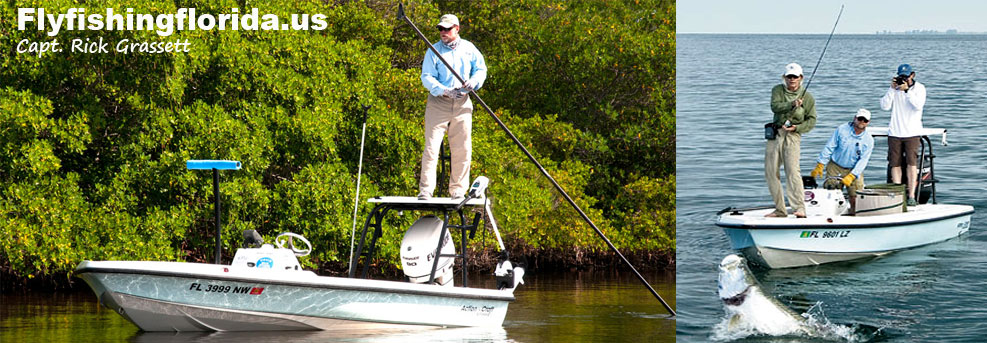Flyfishing Forecast
Capt. Rick Grassett’s Sarasota, FL Fly Fishing Forecast for December 2025
You may find reds along with big trout concentrated in potholes, along the edges of bars or tailing on shallow grass flats on negative low tides this month. This is a good month for catch and release snook action around lighted docks in the ICW. Some lights will also have trout and reds making it possible to get a dock “slam”. There may also be some action in the coastal gulf with tripletail and false albacore (little tunny), depending on conditions.
Snook fishing around lighted docks at night can be good in December. Larger baitfish will thin out as the water cools and snook will gorge themselves on glass minnows in the ICW at night. I like docks that have a good tidal flow and deep water, usually 6’ or deeper, under them. Fly anglers should do well with sink tip fly lines and small white flies, like my Grassett Snook Minnow. Shrimp Gurglers on floating lines may work well when snook are chasing shrimp in the lights. They will force them to the surface and chase them where they are visible. Fish peak tidal flows for the best action.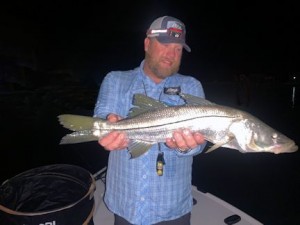
You may find reds in potholes or along the edges of flats and bars when the tide is low. They may also tail on shallow grass flats on negative low tides. Lightly weighted flies, like my Grassett Flats Minnow, will work well in that situation. Weed guards are also important when targeting reds on shallow grass. You may also find reds around docks during the day or at night this month. Use a sink tip fly line and a weighted fly to get your fly into the strike zone for reds.
Flounder prefer a mix of sand and grass, particularly in potholes or on the edges of bars. Fly anglers should score with weighted flies, like Ultra Hair Clousers or my Grassett Flats Minnow fly.
You may find big trout in skinny water this month in many of the same areas where you find reds. I feel that it’s important to release larger over-slot trout, which are usually female breeders. The same flies and techniques that I use for reds will also work for trout in the same areas. I feel that it’s important to protect large trout, which are usually female breeders. Full regulations and details can be viewed at https://myfwc.com/ .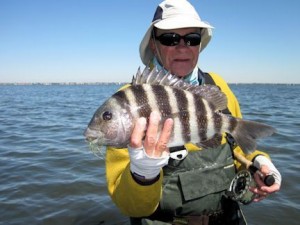
You should also find trout on deep grass flats this month sometimes mixed with blues, Spanish mackerel or pompano. Blues and mackerel will sometimes feed on the surface in the bay or coastal gulf, so bird activity may give their presence away. Pompano may skip when you drift or run past them and when that happens, circle back upwind and drift back through the area casting ahead of your drift. I tie Ultra Hair Clousers on long shank hooks, leaving a portion of the hook shank exposed, when toothy fish are around. I like the shallow flats of north Sarasota Bay and Gasparilla Sound for reds and trout and deep grass flats that are close to passes, on points and along sand bars for trout, blues and pompano in December.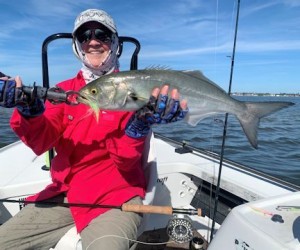
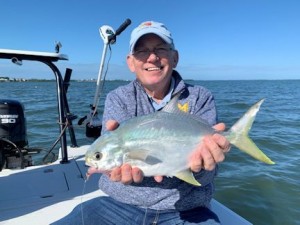
There should still be some action in the coastal gulf with Spanish mackerel, blues, false albacore and tripletail. Look for terns either diving or hovering low over the surface of the water to find albies, blues and mackerel feeding just below the surface. Once you’ve found them, cast glass minnow fly patterns, poppers or Crease flies to them. Fly poppers may draw fish to the surface, especially over structure. You’ll need to add wire or heavy fluorocarbon to your leader when blues and mackerel are around. Look for tripletail around crab trap floats or channel markers. Once you’ve located a fish, work back into the wind or current with an electric trolling motor to get into casting range and cast a lightly weighted fly to them. Weed guards are important to avoid hooking the crab trap lines.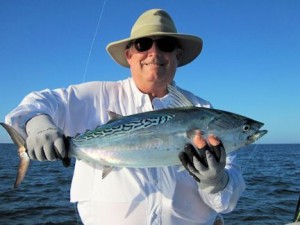
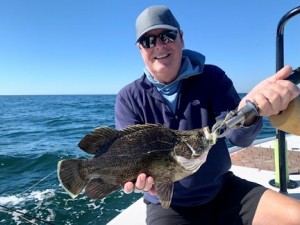
There should be lots of options in December, although weather becomes more of a factor. When conditions are good, I like to fish the coastal gulf for tripletail or albies. If you’re able to choose when to fish, fish ahead of fronts, in the stable weather between fronts or on the strongest tides for the best action. Shallow water action can be very good on low winter tides. Our natural resources are under constant pressure from red tides fueled by agricultural, industrial and residential runoff, toxic spills and discharges, freezes, increasing fishing pressure and habitat loss and degradation, please limit your kill, don’t kill your limit!
Tight Lines,
Capt. Rick Grassett
FFI Certified Fly Casting Instructor
Fly Casting Instructor at CB’s Saltwater Outfitters,
Orvis Outfitter of the Year-2011
Hosted Destination Fly Fishing Trips
www.snookfin-addict.com and www.flyfishingflorida.us
E-mail snookfin@aol.com
(941) 923-7799 (Land line/no text)
